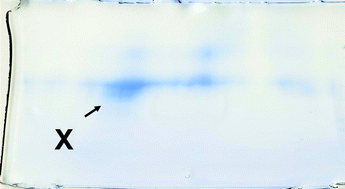Human K10 epithelial keratin is the most abundant protein in airborne dust of both occupied and unoccupied school rooms
Abstract
Previously it was demonstrated that the levels of large particles (>2 micron) and associated bacterial cell envelope markers increase greatly on occupation in schools; it was hypothesized that the source of both was shed human skin. In the current work to test this hypothesis, room air cleaners were used to collect airborne dust (>50–100 mg) from occupied and unoccupied school rooms which was then subjected to proteomic analysis.


 Please wait while we load your content...
Please wait while we load your content...